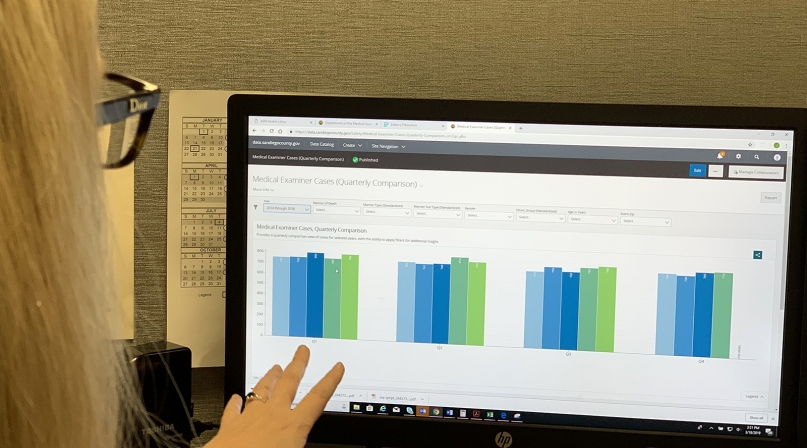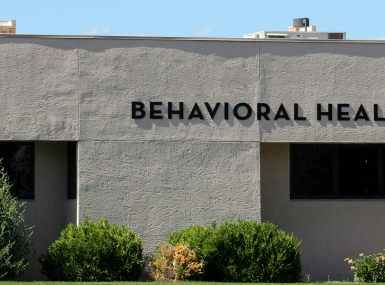Problem:
|
The medical examiner’s office staff faced an increased workload responding to public records requests and had a limited ability to analyze data surrounding deaths.
|
Solution:
|
Release records and standardize data using an accessible portal where information can easily be obtained by the public.
|
It was a significant undertaking for Jennifer Effie to organize more than 60,000 records at the San Diego County Medical Examiner’s Office, but she knew it would be helpful to the community.
Effie, a San Diego County group program manager, standardized all of the data for the San Diego County Medical Examiner’s Open Data Portal.
The medical examiner released more than 22 years of death record information in 2019 to the searchable public internet portal. The portal makes data available to the public, members of the media and other agencies who can take a closer look at its information and provide insights or analyses to improve public health and safety.
The office processes 5,000 requests for information each year by researchers, policy makers and other members of the general public who are all looking for more details as to how or why someone died. The portal reduced the amount of time the department takes to respond to Public Records Act requests, saving an average of 15 hours in staff time per month.
Learn More
View the Open Data Portal
San Diego County’s Medical Examiner’s Open Data Portal is the recipient of a best in category 2020 NACo Achievement Award in the Information Technology category.
Chief Deputy Medical Examiner Steven Campman said organizations often seek specific information related to deaths. He described how law enforcement agencies use the data to see if there are certain drugs in specific parts of the county.
“Each decedents’ information is valuable to our community,” he said. “How people die and recognizing how people die is very important to knowing how we can prevent further deaths or protect the public’s health.”
Effie said it was a major undertaking to prepare the information for the portal. Instead of making only five or 10 years of data available, Effie opted to incorporate every available electronic record.
To ensure all records on the portal were accurate, Effie read through individual cases to check the accuracy of each case.
San Diego County already had a contract for the platform that houses the medical examiner’s open data portal. The data has been viewed over 16,000 times and downloaded nearly 600 times.
While working on the project, Effie handled all public records act requests.
“I could continue to learn what’s important to the media, what’s important to the public, what are they wanting to see in this and how can I develop this in a way that they’re going to be able to go to one place to get a majority of the information they need,” she said.
Effie said internal stakeholders also benefited from the project because the portal gave better insight into what was going on in the community.
“Behavioral health [services] is able to access it, our emergency medical services access it, we look at it on a regular basis as we provide information to our board of supervisors,” she explained.
Prior to the creation of the portal, the medical examiner would release information once a year through an annual report. Now, reports are released every quarter with a summary highlighting the latest findings.
Campman said the portal provides information in a timely manner and is more accessible and user friendly.
“Being able to localize if there’s a certain part of the county where there are many pedestrian fatalities may allow decision-makers the ability to change traffic patterns or safety measures around the areas where the pedestrians are most likely to be killed,” he said.
Effie created charts and graphs to help users understand demographics, age groupings and ethnic groups related to deaths. She said the most commonly requested information is for drug overdose cases.
“We didn’t just push out the data, we also did custom visualizations that helped to immediately answer trend questions,” Effie said.
The San Diego County Medical Examiner’s Open Data Portal can be viewed here https://bit.ly/306T5dj.
“It’s an effort for government transparency, which in these times especially, is really important,” Campman added. “I just think it’s a really good thing for agencies, coroners and medical examiners to be able to do if they can to help with transparency.”




